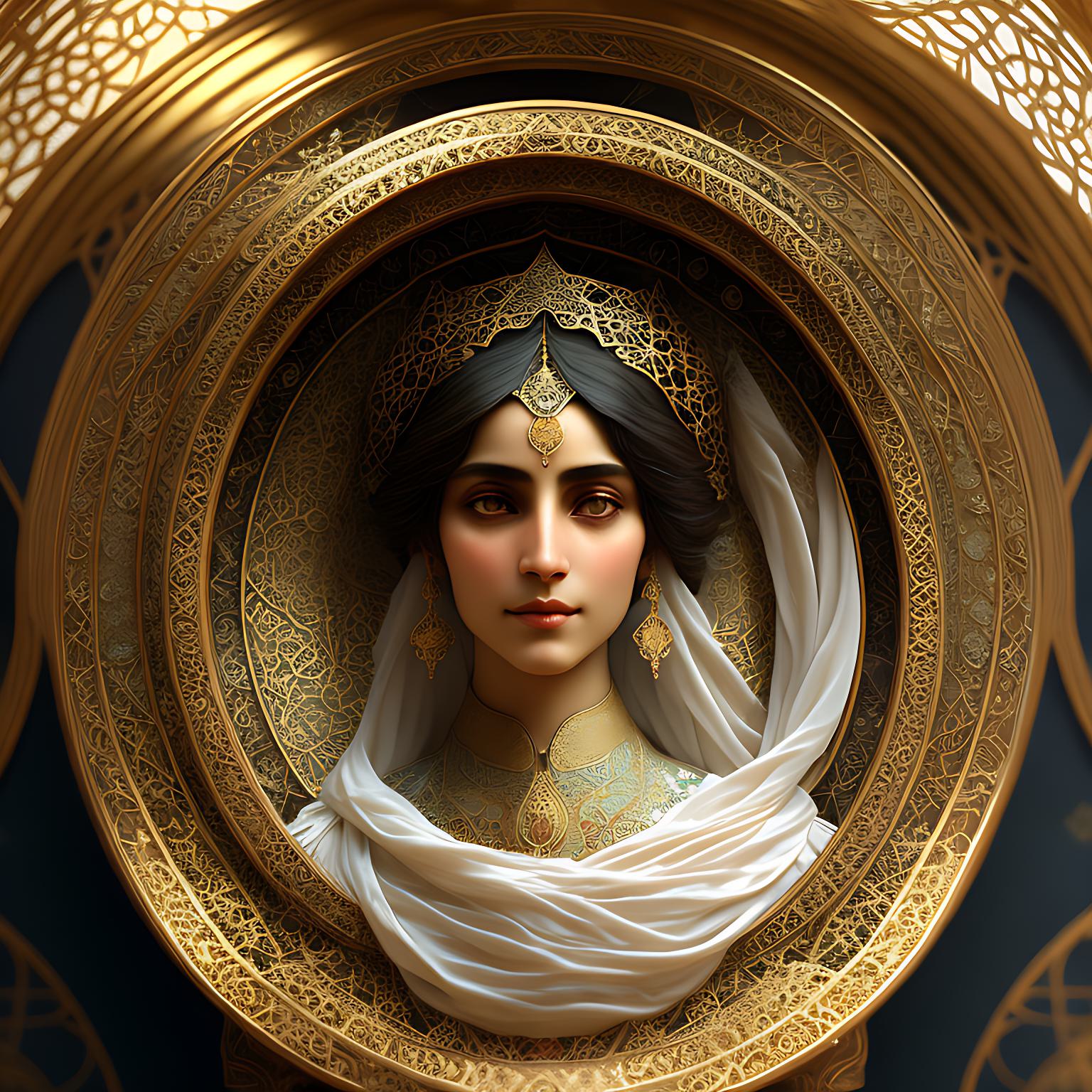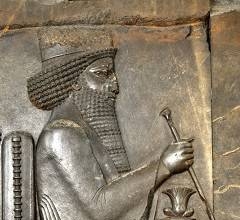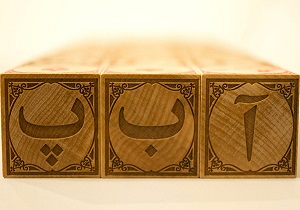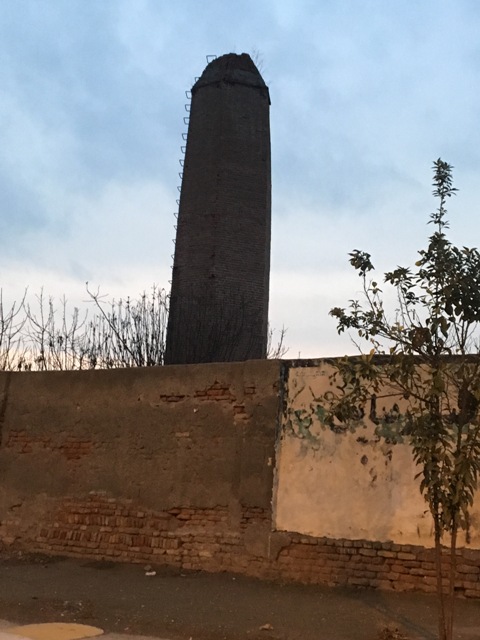Persian Mughans or Iranian Mughans refer to people who engaged in religious, cultural and social activities as Zoroastrian priests during the Achaemenid, Sassanid, and sometimes Parthian and Parthian periods.. By propagating the Zoroastrian religion and teaching inscriptions and religious texts, these people played a very important role in preserving and transmitting Persian knowledge and culture to the next generations..
Persian Mughans as Iranian priests and sages, responsibilities such as interpretation of the Zoroastrian Bible (Avesta), holding religious ceremonies and celebrations, performing funeral rites based on Zoroastrian traditions, and advising the kings and central Iranian governments.. Also, they played an important role in promoting the ethics and social orders of the Zoroastrian religion.
Persian Mughans have been known throughout history as supporters of Iranian culture and national heritage, and some of them are also known as prominent poets, writers and scientists who have contributed to the advancement of Iranian science and arts..
What was Mughan Parsi's ability?
Mughan Parsi's abilities were wide and included skills related to religion, culture, politics and art.. Some of their main abilities are::
- Religious knowledge: As priests of the Zoroastrian religion, Persian Mughans had extensive knowledge of Zoroastrian teachings and religious texts, including the Avesta.. They interpreted and taught these texts and conveyed religious instructions to the people.
- Holding religious ceremonies: Persian Mughans played a key role in organizing Zoroastrian religious ceremonies and celebrations. They had special skills in performing various rituals, including prayers, celebrations and funerals..
- Political advice and leadership: Parsi maghans acted as advisers to kings and central Iranian governments, and at times, had the power to influence political and social decisions..
- Promoting ethics and social orders: Mughan Parsi played an important role in promoting the moral values and social orders of the Zoroastrian religion. They helped to educate people and create social cohesion.
- Preservation of culture and heritage: Mughan Parsi played a very important role in preserving Iranian culture, heritage and arts. Some of the Persian Mughans are known as poets, writers and outstanding scientists who have tried to preserve and transfer knowledge and culture to the next generations.. They played an important role in creating literary, poetic and scientific works based on Iranian culture and beliefs..
- Education: Mughan Parsi were also active as teachers and trainers. They transferred their knowledge in religious, moral, social and sometimes scientific fields to young people and children.
- Treatment and medicine: Some Persian Mughans were skilled in medicine and therapy and in some cases worked as doctors and therapy specialists. They used herbal and traditional knowledge to cure diseases.
In general, Mughan Parsi had various abilities that allowed them to work in different fields and help preserve and promote Iranian culture and knowledge..
Did Moghan exist before Zoroaster?
Yes, before the appearance of Zoroastrian religion, there were priests or maghans in ancient Iran. These priests played an important role in the society by paying respect to the ancient Iranian gods and holding religious ceremonies related to them.. These priests worshiped ancient Persian gods, including Ahura Mazda, Mithra, Anahita, and others..
With the emergence of Zoroastrianism and the establishment of the Zoroastrian religion, many of these priests joined the new Zoroastrian religion and became Zoroastrian monks.. But probably some of the old priests continued to worship their traditional gods. Over time and with the spread of Zoroastrian religion, the role of old priests became less prominent and Zoroastrian priests were recognized as the main priests and religious authority in ancient Iran..
How was Moghan's dress and clothing?
The clothes of Persian priests or Zoroastrian priests in ancient Iran may have consisted of pieces that indicated their function and status in society.. Although pictures and detailed information about Meghan's dress are scarce, but based on historical sources and artistic representations, we can find out some details about them.:
- Hat: A hat called “Cool” Or “Mughan hat” It was used as part of Meghan's dress. This hat was in the form of a tall and narrow cylinder and was usually white in color.
- clothes: The main garment of the Mughan was usually a tunic or long linen that reached from the neck to the feet. This garment was made simply and without ornaments and was often white to symbolize chastity and purity..
- Hand and foot cover: Mughans may have used white gloves and socks to cover their hands and feet.
- Belt: A belt or a bodice made of materials such as yarn or fabric was tied around the waist of Mughan.
- Mask: In some Zoroastrian religious ceremonies, masks were used to cover their faces.. These masks are called “Petima” They were known and were usually made of white cloth. The use of masks in some religious ceremonies showed respect for God and avoiding contamination of the sacred environment by the human soul.
- burqa: In some cases, Mughans used a burqa or cloth to cover their head and face. This burqa was used to maintain chastity and purity in the presence of God.
- a stick: Some Mughans used a cane during religious ceremonies as a sign of dignity and power.
The clothes of Zoroastrian monks were generally simple and with bright colors to symbolize chastity, purity and holiness.. These clothes were also used to create harmony and cohesion in the society and to show the duties and responsibilities of the Mughans in religious and social fields..
What period does the history of Moghan belong to?
Mughan in ancient Iran, especially during the Achaemenid Empire (About 550-330 before Christ) and Sassanid (224-651 ad) They played an important role. But priests or priests existed in ancient Iran before the emergence of Zoroastrian religion. The emergence of Zoroastrian religion ca 1500-1200 BC is estimated. Therefore, the Mughans as Iranian priests from ca 3000 A year or more old. This time period includes the Madian, Achaemenid, Sasanian and other Iranian empires..







Greetings and respect
There were many non-monotheistic religions in ancient Iran. Each of these religions had their own priests.
The Persian Mughans were priests of the idol of Mithras or love worship.
Hirbdan monks were idolaters of Anahita. Ardeshir Popkan or Babakan Hirbad was a priest of Anahita religion.
The Mobads were Zoroastrian monks.
According to the religious teachings of Zarvan worshipers, Zvan or the God of Time decides to leave God to his child, but instead of a son, his children become twins, the first of these two sons tears open his mother's womb and is born, and the second You are born naturally. Zarvan bestows the status of God on his firstborn, who is not as beautiful as his twin, for nine thousand years, and after this period, his more beautiful twin will be God forever..
The older child was Ahriman or Satan or Iblis and the younger child was Ahura Mazda.
Followers of all three religions (Zarvan worshipers, Ahriman worshipers and Mazda worshipers) They believed that Almighty God is the devil for nine thousand years. In the Avesta, Kavis or Kaves and Kerpans or Kerbans are mentioned. Probably the monks of Zarvan and Ahramin idols were called by these names.
Zoroastrian objected to the view related to the three above-mentioned religions and believed that good cannot be defeated by evil and that Ahuramazda has conquered the devil and has obtained the status of a god, and the war between Ahuramazda and Eriman or good and evil is related to Ahriman's attempt is to reclaim his position from Ahura Mazda.
Therefore, Zoroastrian religion is apparently a religion in Ahuramazda religion.
Ardeshir Popkan or Babakan (The founder of the Sassanid dynasty) who himself is a Hirbad or priestess of Anahita idolatry (Probably the leader of the priests of this religion in his time) is, he gives the task of compiling the Avesta book to Mehnarse, who was a magician and the leader of the priests of the Mehr religion, neither of these two people was a priest or priest of the Zoroastrian religion..
In the book of Avesta, the Gathas section is attributed to Zoroaster. Other parts of the Avesta are named after the idols of the popular religions at the time the Avesta was written, probably the religious books of those religions that are included in the Avesta..
Apparently, Ardeshir Popkan or Babakan tried to achieve the religious unity of the followers of these religions in Iran by preparing a single text for all non-monotheistic religions common in his time.. The followers of the aforementioned religions, the followers of religions or idols before these religions were called Gebar.
At that time, there were other non-monotheistic religions in Iran, such as shamans and Buddhists (Nobahar Temple, Balkh), Mazdakians, Manichaeans, Assyrian idols, Elamite idols, Babylonian idols, Indian idols, Greek idols, Roman idols, as well as monotheistic religions of Prophet Daniel, Moses and Christ have also been common..
I am ashamed to say that, according to the documents that I have seen so far, the monks of all these religions were men, and the image presented in this essay has nothing to do with Magha. (Priests of the religion of Mehr or Mithraism) does not have.
Greetings and respect
There were many non-monotheistic religions in ancient Iran. Each of these religions had their own priests.
The Persian Mughans were priests of the idol of Mithras or love worship.
Hirbdan monks were idolaters of Anahita. Ardeshir Popkan or Babakan Hirbad was a priest of Anahita religion.
The Mobads were Zoroastrian monks.
According to the religious teachings of Zwan worshipers, Zwan or the God of Time decides to leave God to his child, but instead of a son, his children become twins, the first of these two sons tears open his mother's womb and is born, and the second You are born naturally. Zawan gives his firstborn, who was not as beautiful as his twin, the position of God for nine thousand years, and after this period, his more beautiful twin will be God forever..
The older child was Ahriman or Satan or Iblis and the younger child was Ahura Mazda.
Followers of all three religions (Zwan worshipers, Ahriman worshipers and Mazda worshipers) They believed that God is the most powerful in nine thousand years. In the Avesta, Kavis or Kaves and Kerpans or Kerbans are mentioned. Probably the monks of Zarvan and Ahramin idols were called by these names.
Zoroastrian objected to the view related to the three above-mentioned religions and believed that good cannot be defeated by evil and that Ahuramazda has overcome evil and has attained the status of a god, and the battle between Ahuramazda and Ahuramazda or good and evil is related to effort. Ahriman wants to regain his position.
Therefore, the Zoroastrian religion is apparently a religion in the Horam Mazda religion.
Adarshir Popkan, who himself was a hirbad, to Mehnares, who is a magician and the leader of the priests of the Mehr religion. have beengives the task of compiling the book of Avesta, in the book of Avesta there is a section of Gathas attributed to Zoroaster.
Apparently, other parts of Ostaf are related to the books of other religions common at that time.
followers of the aforementioned religions, Followers of religions or idols before these religions was called Gebar.
I am ashamed to say that, according to the documents that I have seen so far, the monks of all these religions have been men and The image presented in this article has nothing to do with Mugha.
Your explanation is interesting, excellent and thought-provoking, but the historical explanation part is according to the Sassanid documents which were later translated,,, therefore, the Achaemenid Parthian documents do not apply, the religion of the Iranian people before the end of the Sassanid era was the Mehri religion and only the Baghdadi Sasanians were of maternal descent, Zoroastrianism.. And the religious war was the reason for the defeat of the Arabs
What kind of history are you writing a bunch of unfortunate Panfaris?. Who will believe you? Write until you run out of ink and then we'll see what you do. Your Persian Mughan was also the joke of the century.
No one forced anyone to believe, why are you angry? .
Did someone force you to read this article?
Cool !? From which source did you find this word?
There is definately a lot to find out about this subject. I like all the points you made
Moghan Madi is a more correct title.
They lived in the era of the Pars people
So Mughan Parsi is right
His words are based on the fact that these religious leaders among the Median peoples have an older history and it is not wrong, but we must know that these rituals are among the Aryan peoples. (in general ) It was heavily influenced by the Elamites, even the cover and structure of religious supremacy